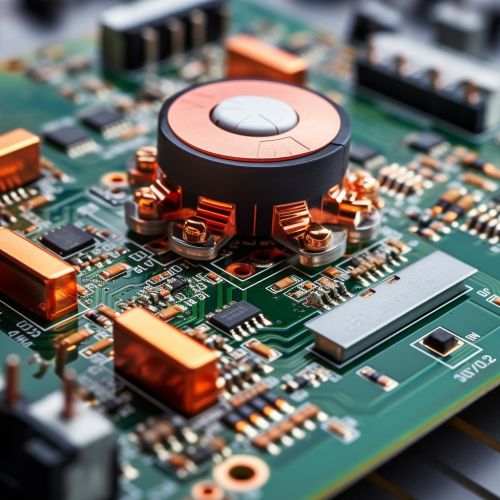MOSFET
Introduction
The Metal-Oxide-Semiconductor Field-Effect Transistor (MOSFET) is a type of field-effect transistor (FET) that has an insulated gate and is widely used in digital and analog circuits. The MOSFET is a four-terminal device with source(S), gate(G), drain(D), and body(B) terminals. The body of the MOSFET is often connected to the source terminal so making it a three terminal device like field effect transistor. The MOSFET is very far the most common transistor and can be used in both analog and digital circuits.


History
The MOSFET was invented by Mohamed M. Atalla and Dawon Kahng at Bell Laboratories in 1959. It was the first truly compact transistor that could be miniaturised and mass-produced for a wide range of uses. With its high scalability, and much lower power consumption and higher density than bipolar junction transistors, the MOSFET made it possible to build high-density ICs.
Structure
The main components of a MOSFET are the source, gate, drain, and body. The gate is separated from the body by an insulating layer of silicon dioxide (SiO2). When a voltage is applied to the gate, the electric field generated penetrates through the oxide and creates an "inversion layer" or "channel" at the semiconductor-insulator interface. The inversion layer provides a channel through which current can flow between the source and the drain.
Operation
The operation of a MOSFET can be separated into three different modes, depending on the voltages at the terminals. In the following discussion, a simplified algebraic model is used which is accurate enough for understanding the operation of the device.
Cut-off Mode
In the cut-off mode, the MOSFET is in its "off" state. This is achieved by applying a voltage that is less than the threshold voltage to the gate.
Triode Mode
In the triode mode, the MOSFET is in its "on" state, and a channel has been created which allows current to flow between the drain and the source. The MOSFET operates in the triode region when the gate-source voltage is greater than the threshold voltage and the drain-source voltage is less than the gate-source voltage minus the threshold voltage.
Saturation Mode
In the saturation mode, the MOSFET is also in its "on" state, but the channel is pinched off, meaning that the drain current is not affected by small changes in the drain-source voltage. The MOSFET operates in the saturation region when the gate-source voltage is greater than the threshold voltage and the drain-source voltage is greater than the gate-source voltage minus the threshold voltage.
Applications
MOSFETs are used in a wide variety of applications. They are the building blocks of modern digital circuits, such as microprocessors, memory chips, and logic gates. They are also used in analog circuits for tasks such as signal amplification, regulation of power, and radio frequency (RF) amplification.
Advantages and Disadvantages
The main advantages of MOSFETs are their high input impedance and low output impedance, which make them ideal for use in voltage amplifiers. They also have high switching speed, which makes them ideal for use in digital circuits. However, they are susceptible to damage from electrostatic discharge (ESD), and they can suffer from thermal instability.
